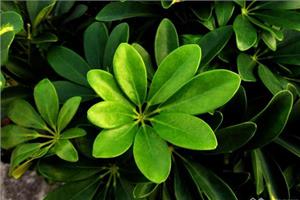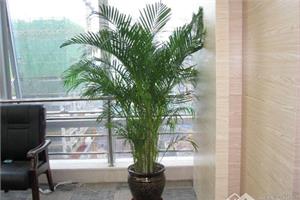Introduction of alpinia officinarum L. Culture method of alpinia officinalis
Alpinia officinalis has a relatively high ornamental value, its dark green leaves have irregular golden stripes, in the sun will seem to give the leaves plated with a layer of gold, very eye-catching.

Introduction of alpinia angustifolia
Shape: alpinia angustifolia Latin name is Alpinia zerumbet, alias alpinia officinalis, variegated leaf peach, colored leaf ginger, spotted moon peach, etc., plant height of about 1 meter, dark green leathery leaves long oval-shaped lanceolate, 50-60 meters long, 10-15 meters wide, the leaf surface has irregular golden yellow longitudinal stripes, bright color, if properly maintained, golden stripes connected into large, more dazzling. It blossoms from June to July, the flower posture is elegant, the flower fragrance is attractive, the panicle is raceme, drooping.
Function: potted alpinia angustifolia is suitable for hall decoration, outdoor cultivation embellishes the courtyard, pool or corner, with a unique style. The ornamental effect of alpinia officinarum is very good on the side of the landscape, the edge of the green space and the courtyard.
Culture method of alpinia officinalis
Habits: like high temperature, humid environment, not resistant to cold, afraid of frost and snow. Like the sun, but also a little shady. Grow well in fertile loam.
Soil: when cultivating alpinia officinalis, we should choose loose soil with good drainage.
Reproduction: commonly used ramet and sowing reproduction. Ramets are propagated in spring and summer and plants with underground roots are dug up to cut off the aboveground stems and leaves. Keep 1/3 of the stem length, cut the rhizome 4-5 cm, each section with 2-3 stems, directly potted or planted in the open field. After planting, it was temporarily placed in a semi-shady place for maintenance, and the normal management was restored after the germination of new buds. The temperature of sowing and reproduction is 25-30 degrees Celsius and germinates 15-20 days after sowing.
Temperature: the optimum growth temperature of alpinia angustifolia is 18 ℃-30 ℃. Avoid cold frost. The overwintering temperature needs to be kept above 10 ℃. In winter, the temperature drops below 4 ℃ and goes into dormancy. If the ambient temperature is close to 0 ℃, it will die of frostbite.
Lighting: alpinia angustifolia is afraid of strong light, so it needs to be preserved in semi-shade, or give it 70% shade. If it is too shady, the leaves will not be bright enough. For indoor maintenance, put it in a brightly lit place as far as possible, and move to outdoor semi-shade or shade for a month every one or two months to accumulate nutrients and restore growth. If you put alpinia officinalis in a semi-shady place in midsummer, the leaf markings will be more obvious.
Moisture: alpinia officinalis likes a humid climate, requiring the relative air temperature of the growing environment to be 60-75%. When breeding, we should pay attention to keep the soil moist and avoid being too dry. In summer and autumn, we should often spray water on the leaves of alpinia officinalis to increase air humidity; in winter, alpinia officinalis is dormant, so we should water less and follow the principle of dry rather than wet.
Fertilization: alpinia angustifolia requires more fertilizer and water, but is most afraid of random fertilization, concentrated fertilizer and partial application of nitrogen, phosphorus and potassium fertilizer. It is required to follow the fertilization principle of "frequent application of light fertilizer, less amount and more times, and complete nutrition". Fertilizing once a month during the growing period, mainly phosphorus and potassium fertilizer.
Pruning: open-field cultivation needs to often remove dense stems and leaves and cut off broken stems and leaves to keep the plant shape beautiful. After 4 years of cultivation, the underground rhizome should be dug up again, the old rhizome should be removed, and the plant should be renewed.
Change the pot: due to the strong tillering ability and rapid growth of alpinia officinalis, the pot is changed every 1-2 years, the leaves are dull and too high, and the stems and leaves are replanted.
Diseases and insect pests: the main diseases are leaf blight and brown spot, so we should pay attention to timely treatment. At the initial stage of the onset of leaf spot, Bordeaux solution was sprayed 2-3 times every 10 days, and brown spot occurred. 70% methyl topiramate wettable powder 1000 times solution could be used to control the disease.
The above is the relevant introduction of this article, I believe you have a simple understanding of this after reading it, if necessary, you can continue to pay attention to the No. 1 home network for more information.
- Prev

Matters needing attention in how to raise duck foot wood
Matters needing attention in how to raise duck foot wood
- Next

The effect of loose-tailed sunflower on home environment the collocation of loose-tailed sunflower and household style
The effect of loose-tailed sunflower on home environment the collocation of loose-tailed sunflower and household style
Related
- Wuhan Hospital Iron Tree Blooming Result Was Instantly Frightened by the Gardener Master
- Which variety of camellia is the most fragrant and best? Which one do you like best?
- What is the small blue coat, the breeding methods and matters needing attention of the succulent plant
- Dormancy time and maintenance management of succulent plants during dormancy
- Minas succulent how to raise, Minas succulent plant pictures
- What are the varieties of winter succulent plants
- How to raise succulent plants in twelve rolls? let's take a look at some experience of breeding twelve rolls.
- Attention should be paid to water control for succulent plants during dormant period (winter and summer)
- Watering experience of twelve rolls of succulent plants
- Techniques for fertilizing succulent plants. An article will let you know how to fertilize succulent plants.

